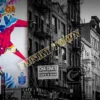-
 play_arrow
play_arrow
WIDELINE RADIO the energy web radio
-
 play_arrow
play_arrow
APERITIVO ITALIANO cosa meglio di un aperitivo?
-
 play_arrow
play_arrow
WIDE LOVE REGGAE RADIO love for reggae
-
 play_arrow
play_arrow
SNAIT la radio che nos mouf
-
 play_arrow
play_arrow
RITMO una radio che ti muove i piedi
-
 play_arrow
play_arrow
CABINA DJ mix senza sosta
-
 play_arrow
play_arrow
WIDELINE COUNTRY best country music
-
 play_arrow
play_arrow
LT2 NEW GENERATION LT2 reborn radio
-
 play_arrow
play_arrow
Rock Line Rock Line
-
 play_arrow
play_arrow
CANAL FURLAN la miòor radio tal friùl
-
 play_arrow
play_arrow
WIDE FUNKY funky dub
-
 play_arrow
play_arrow
Wide 60’s Wide 60's
-
 play_arrow
play_arrow
Radio Penne Alpine Radio Penna
- home Home
- keyboard_arrow_right Music
- keyboard_arrow_right Video stories
- keyboard_arrow_right Articoli
- keyboard_arrow_rightThe Music That Immortalised 90s Subculture with electronic technologies
The 90s undoubtedly marked the Golden Age of underground music zines cataloguing subcultural movements. Without an avalanche of Tumblr accounts offering endless information on what your favourite band is wearing, Soundcloud recommendations about who to listen to next, or Twitter documenting your most-loved guitar player’s childhood fear, publications such as the pioneering DIY zine Sniffin’ Glue and groupie-focused Star found their way into the eager hands of music fans around the world. To celebrate a simpler time, here is our rundown of the five most iconic underground zines you might not have heard of, and where you can read them.
Starting off this list with the OG of all zines, Sniffin’ Glue was the first publication to chronicle punk from an insider’s point of view. Created in the UK in 1976, right after editor Mark Perry (who was a bank clerk at the time) watched a Ramones concert, Sniffin’ Glue’s haphazard DIY style, with felt-tip titles, shabby grammar, swear words and informal writing paved the way for the many punk zines that followed. Submitting to the movement’s idea of creating your own culture and rejecting the old, it did not subscribe to any traditional forms of publishing, and in fact was closed down after only 14 issues due to fear of becoming incorporated into the mainstream music press. Unfortunately, it is not catalogued online – but if you’re London-based, you can check out the full archive at the London College of Communication’s zine library.
Considered scandalous at the time, 1973’s LA-based Star magazine was aimed at teenage girls and chronicled the lives of the decade’s most iconic groupies, from Sable Starr to the hyper-controversial Sunset Strip “baby groupies”. With a manifesto that could almost be called feminist, the first issue opened riddled with angry letters from teachers and parents – one of them surprised the magazine “didn’t come wrapped in plain brown paper” as a porn magazine would – to which the editorial team answered: “How about letting Arkansas’ girls decide about Star?” It even featured a commentator that could’ve come straight from 2016, who stated that men like him don’t like this “Women’s Lib baloney” that the magazine advocates. Referring to their readers as Foxy Ladies (also a name used for baby groupies), Star never undermined their pheromone-ridden teen readers, and featured plenty of pictures of a young Mick Jagger, alongside comic strips of fantasy scenarios, for example where a fan dresses up as glam rock icon Marc Bolan to get backstage. With five printed issues painstakingly collected and digitalized, you can access the whole archive here.
Scritto da: Wideline Radio Admin
Post simili
Aprile 2025 L M M G V S D 1 2 3 4 5 6 7 8 9 10 11 12 13 14 15 16 17 18 19 20 21 22 23 24 25 26 27 28 29 30 Featured post
Latest posts
Current show
Upcoming shows

ITALIAN STYLE
09:00 - 12:30

FUNKY TOWN
musica funky town
12:30 - 13:00
90 TPN
13:00 - 19:00

APERITIVO ITALIANO
musica mix
19:30 - 22:00
R&B NIGHT
22:00 - 00:00
Chart
CONTATTI
WIDELINE RADIO
SCRIVICI
FATTI SENTIRE
le tue parole verranno lette
WidelineRadio is powered by ASSOGROUP
all rights reserved
ASSOGROUP.BIZ









